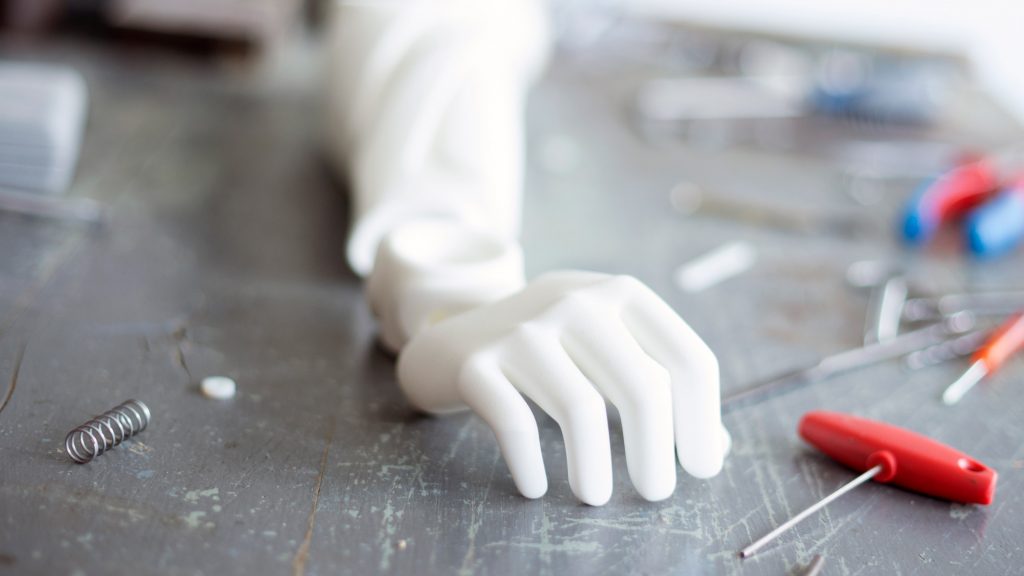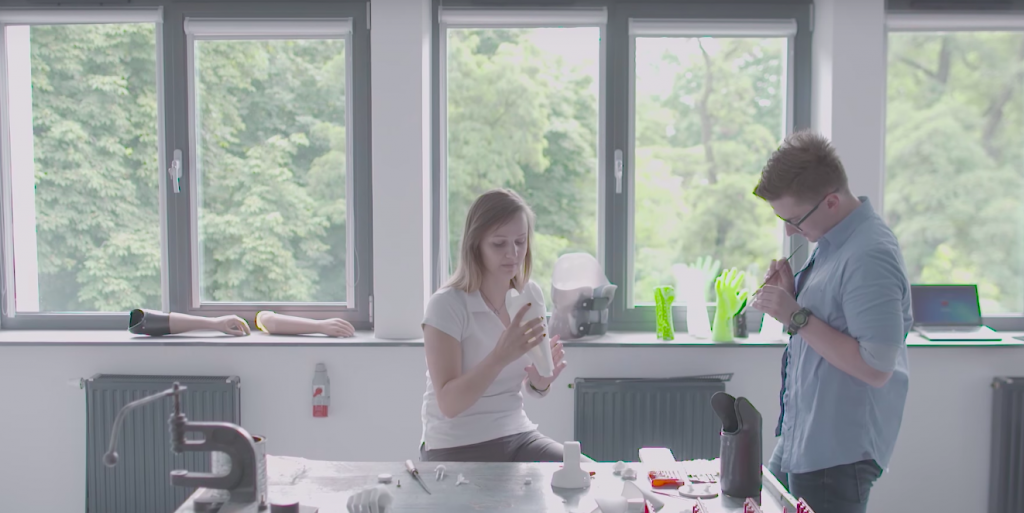Glaze Prosthetics is a Polish startup offering customized 3D printed lightweight prostheses. Consisting of a team with 7 years of experience in producing prostheses, Glaze has now turned to 3D printing a replaceable arm system.
Glaze CEO Gregorz Kosch founded the Krakow-based company aiming to “blaze the path of innovative design within the prosthetics industry”. He hoped that “instead of feeling ashamed,” Glaze designs would “help amputees feel proud of their distinctiveness.”

Making the prosthetics
Glaze’s initial prostheses were created exclusively by their two in-house designers, but now amputees, their friends and the wider design community can submit designs for potential implementation. Designs that Glaze have already produced include built-in speakers, smartphone compartments and flashlights.
Using their own software, the Glaze team can adapt the prosthetic to the amputees precise measurements. The prostheses are made on an EOS SLS 3D printer using a selection of specially produced polyamides. The equipment and prototyping is provided by Glaze’s partner, the 3D printing service bureau Bibus Menos. After the main body of the prosthetic limb has been 3D printed, it is then turned over to a team of designers for post-production.
Dependent on the style, colours and modifications of prosthetic that the amputee would like, the post production takes around two weeks. Also dependent on this is the price, which ranges between €2000 and €3000 for both above and below-elbow amputees.

A prosthetic by designers, not just technicians
While practicality is paramount for any prosthetic, Glaze has placed a greater emphasis on design, aiming to make them “the most beautiful choice for amputees”. The idea behind the customisability and individuality of each device is to give amputees a chance to express themselves through their prosthetic limb.
In doing this, Glaze states that it is the first to offer an interchangeable system whereby a prosthesis can be securely removed and replaced in a socket within 3 seconds. It is also the first to offer amputees the opportunity to fully customize the colors, shapes, and the style of finishing (glossy or matte).

The impact on amputees
Piotr Sajdak, who was among the first to receive a customised prosthetic arm, has candidly described how his own prosthesis has given him a new lease of life, and a new careers a a cook, personal trainer and motivational speaker.
He described how Glaze alone “allowed me to have a say in how my prosthetic would look, how it could help me function, and especially how it could set me apart from others with or without prosthetic limbs.”
When 3D printing brings freedom
A prosthesis is, for many, a necessity after the loss of a limb. A customizable prosthesis instead has the ability to empower amputees by releasing them from the constraints of that necessity. With customisability emerging as one of the key advantages of designing through 3D printing, it appears that Glaze is doing just that.
Other projects that are offering customisable 3D printed solutions for amputees include Havenlabs. The not-for-profit’s utility gauntlets and armbands are open source, and their design allows users to insert custom attachments to help them with specific tasks.
For more on the physiological and medical applications of 3D printing, subscribe to our free 3D Printing Industry newsletter, follow us on Twitter, and like us on Facebook.
Featured image shows amputee Piotr Sajdak holding a skateboard with his prosthetic arm. Photo via Glaze Prosthetics.


